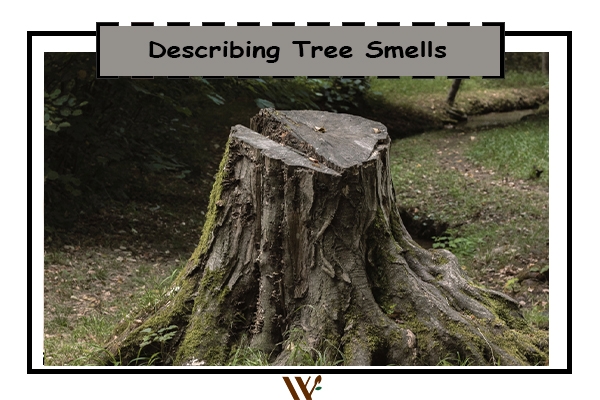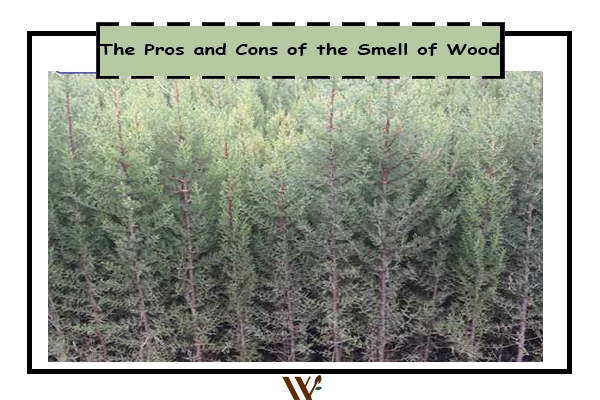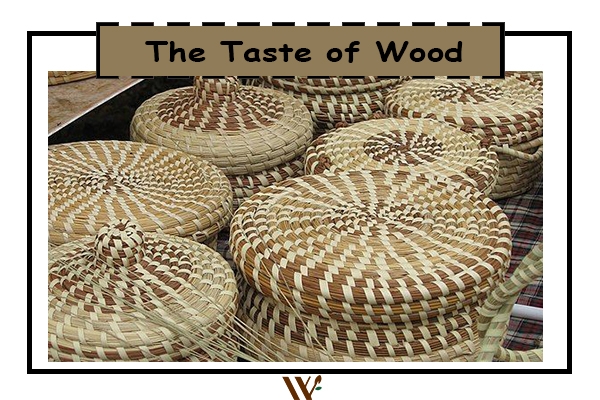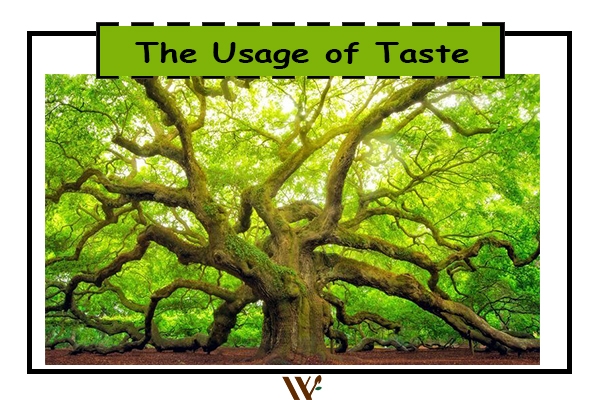The smell of wood is because of a type of material called volatile extractives that are present inside it. These extractives are usually stored inside the cell membranes of the wood.
Considering the fact that these extractives are usually volatile, a freshly-cut piece of wood is quite aromatic and gradually loses its smell after being in the open air for a while. That’s why the smell is usually more noticeable in freshly-cut wood.
Also, sometimes this aroma can be created because of wood-decay fungi or bacterial attacks. These things break down the cell membranes of the wood, resulting in a stronger smell.

Describing Tree Smells
Describing tree smells is not as easy as describing their color. But it’s possible to identify certain types of wood because of their unique smell.
Cedar and cypress trees have a pleasant smell and pine trees smell like resin. A certain type of maple tree creates an aroma that smells like strawberry jam when it’s warm and moist. Teak wood smells like burnt leather.
Some tropical trees also have a variety of smells. These trees are named after their smell, for example, some of them are known as garlic wood, camphor wood, raspberry wood, etc.
From native Iranian trees we can mention zarbin which is a type of cypress. Zarbin trees have a pleasant smell. Another one is yew wood which has an unpleasant smell. However, with all that said, it’s not always possible to identify different types of wood via their smell because a lot of them don’t have a special smell and they lose their smell over time or because of other external elements.

The smell can be one of the advantages of the wood and plays an important role in determining the use cases of that type of wood. For example, most high-quality pencils have a nice smell to them. That’s because different types of cypress and juniper trees are used in making them. On the other hand, in other use cases such as basket making, transit boxes, and food packaging, the smell can be a disadvantage as it can negatively affect the smell of the food.
In these cases, using woods with no smell has a higher priority. Some types of wood have a special smell that can repel wood-decay pests. In other words, they’re wood repellent and because of that, they have a higher natural resistance compared to smell-less woods. For example, in older times, the people of northern Iran used to make wardrobes from zarbin wood because zarbin has a special smell that repels wood-decay pests. So the wardrobes would last for years. However, it’s worth mentioning that just being pest repellent is not enough of a reason for wood to have high resistance. Some types of wood have a high natural resistance without having a special or unique smell.
The Taste of Wood
The taste of wood is also because of the extractives inside it. The taste can be effective in identifying and determining the use cases of the wood. Freshly-cut wood usually has a more noticeable taste, especially on the inner parts. Oak and chestnut trees, which have a high concentration of extractives, have a bitter taste.

The Usage of Taste
In France, the best and top-quality drinks are fermented in oak wood casks. Usually, the taste is not a commonly used factor in identifying the wood. But they’re used for identifying and differentiating woods that have a very similar microscopic structure.
The taste of wood is important in certain use cases such as making wooden plates, wooden spoons, ice cream sticks, etc.





